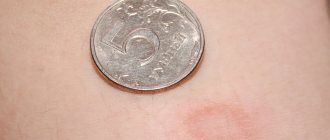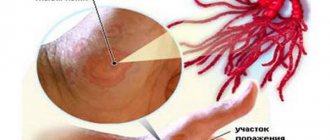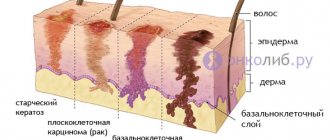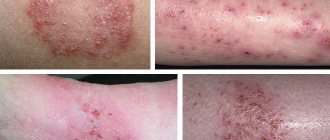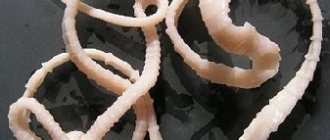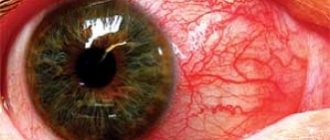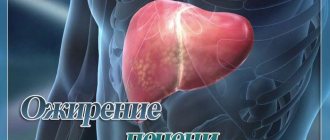There are different types of lichen, and each of them differs not only in the variations of formations on the skin, but also in the cause of the disease itself. There are those that are caused by the penetration of pathogenic viruses into the body, and there are fungal ones that appear due to the harmful effects of microorganisms living in the human body. One of these fungal lichens is tinea versicolor or, as it is also called, pityriasis versicolor.
The human body is home to a huge variety of different microorganisms, including fungi. And any of them, even the most useful ones, can pose a danger from time to time if the conditions of control over them are violated. Weakness of the body, metabolic disorders, increased sweating - all this can cause increased proliferation of fungi in the hair follicles and in the stratum corneum of the epidermis, which will lead to the appearance of pityriasis versicolor on the skin.
It is very easy to recognize tinea versicolor, since it consists of spots that begin at the roots of the hair on the head and body and tend to merge into one large formation, covering the head, neck, shoulders, and torso. This type of lichen received its name for the different color range of spots: red, yellow, brown or whitish due to pigmentation disorders in the skin. At the same time, the skin at the site of the formed spots begins to peel off and may become covered with scabs, which gives the second name to lichen - pityriasis versicolor.
This type of lichen is not dangerous to the body, but causes severe aesthetic discomfort in the patient, since over time the spots darken and grow more and more, taking on bizarre shapes, similar to the outlines of certain islands on a geographical map. Moreover, if the patient spends a lot of time in the sun, the tan will cover only healthy areas of the skin, and lighten those affected by lichen.
The fungus does not spread deeper than the upper layer of the epidermis and therefore all the unpleasant sensations associated with tinea versicolor are concentrated on the skin. In addition to the unaesthetic appearance and flaking of the skin, this may include frequent itching and increased sweating.
Description of the disease
Pityriasis versicolor is a disease of the upper layer of the epidermis, caused by a fungus of the genus Malassezia. For a long time it can be asymptomatic, and subsequently affects only the stratum corneum of the skin and the hair cuticle. It affects mainly young people aged 14 to 40 years, and is practically not diagnosed in children under 7 years of age. Treatment of pathology is systematic and includes the use of antifungal agents for internal and external use. Otherwise, the lichen begins to grow, spreading to increasingly large surfaces of the epidermis.
What is tinea versicolor?
pityriasis versicolor in the photo
The occurrence of symptoms of pityriasis versicolor can be explained by several factors. And these symptoms cause severe psychological discomfort, since the main symptom of the disease in question is the formation of unaesthetic spots on the skin of the body. It is extremely difficult to completely get rid of this rash on the body, and such a condition requires long-term treatment, which requires a large supply of patience and endurance.
Ringworm is very common in countries with hot and humid climates, since the activation of fungi in the skin is often associated with increased sweating in humans.
With this fungal infection, pathological damage to the stratum corneum of the epidermis occurs. But, despite its apparent seriousness, lichen versicolor is not a dangerous disease that poses a threat to human health and life.
Causes and characteristic symptoms
Normally, a fungus of the genus Malassezia is constantly present on the body and at the mouth of the hair follicles. However, under the influence of a number of unfavorable factors, it begins to multiply intensively, causing characteristic symptoms. These factors include the following:
- increased sweating;
- failure to comply with basic hygiene rules;
- increased skin oiliness;
- concomitant diseases (diabetes, gastrointestinal pathologies, asthma, hormonal imbalance);
- vegetative-vascular disorders;
- immunodeficiency while taking glucocorticoids or cytostatics.
The first symptom of lichen is small, irregularly shaped spots. They can be localized on the back, sternum, neck, head, legs. They have a pinkish or brownish tint. Peeling in the form of small scales appears on the surface of the spots. There is no inflammatory process, suppuration or pain.
Signs
How to determine whether a person really has tinea versicolor? Treatment will give a guaranteed effect only if the disease has been diagnosed correctly. Typically, asymmetrical spots of various shades appear on skin affected by the fungus - from pink to cinnamon. After some time, they begin to merge into fairly large lesions with jagged edges. With prolonged exposure to the sun, the spots may change color. They lighten or acquire a dark brown tint. It is for this reason that lichen is called multi-colored.
The spots usually appear on the back. Less commonly, lesions occur on the shoulders, abdomen and neck. In some cases, lichen appears on the scalp. Even after a course of treatment, the disease can manifest itself again.
Treatment methods
The clinical picture of pityriasis versicolor is in many ways similar to the manifestations of other skin diseases. Therefore, if spots appear on the skin, you should consult a dermatologist. Based on a physical examination and a series of tests (microscopic examination of a sample of the affected skin, iodine test, use of a Wood's lamp), the doctor should explain in detail how to properly treat pityriasis versicolor.
Typically, therapy involves the systemic internal and external use of medications to destroy the causative agent of the disease.
Then keratolytics are prescribed - agents that promote better exfoliation of damaged skin. The duration of treatment is about a month. A sign of complete recovery is the complete absence of dead particles on the skin. After this, a gradual renewal of the epidermal tissue occurs, as a result of which the lichen spots disappear.
During the entire treatment period, you must avoid wearing clothes made of synthetic materials. It is important to regularly change your underwear and bed linen, and iron it after washing. It is recommended to wash in warm water using a separate washcloth and towel. After restoration of the skin, it is advisable to undergo repeated diagnostics using a Wood's lamp.
Factors contributing to the development of lichen
Reasons contributing to the development of ringworm include:
- frequent use of cosmetics and aggressive hygiene products – scrubs, gels;
- increased sweating;
- hormonal imbalances caused by various pathologies, for example, diabetes;
- reduced protective properties of the body;
- close contact with a person suffering from this pathology;
- hereditary characteristics of the body.
As a result of increased sweating, a moist environment is created on the surface of the skin, provoking active reproduction of the pathogen. Dry skin has a detrimental effect on the fungus.
https://www.youtube.com/watch?v=tsT1OrCsYfw
When the immune system is weakened, the body's protective function is weakened. It cannot sufficiently resist not only fungi, but also viruses, bacteria, and protozoa. Combined infections are difficult to treat, so you need to try to prevent them from developing.
House dust consists of scales of human epithelium, which contain mites, food particles, and allergy triggers - an excellent repository of mycobacteria.
Tablets for pityriasis versicolor
Systemic antifungal drugs are available in the form of tablets or capsules. Their help is resorted to in severe cases of lichen, when external means in the fight against the fungus have proven ineffective. Most often, doctors prescribe medications from the table below.
| Drug name | Features of application | Price |
| Rumicosis | The composition contains itraconazole, a substance that, when taken in a course, retains antifungal activity for 28 days. The single dose selected by your doctor should be taken twice a day. Contraindications include children under 12 years of age, disorders of the gastrointestinal tract, liver and heart diseases. | 396 rubles |
| Itrazole | Take 2 capsules twice a month. Then they take a break for 3 weeks, and after that the treatment is repeated 2 or 3 times, depending on the dynamics of recovery. The drug is available with a doctor's prescription. Treatment may be accompanied by disorders of the gastrointestinal tract, nervous and vascular systems. In some cases, allergies appear in the form of a rash and severe itching. | 276 rubles |
| Fluconazole | The medication is available in the form of capsules, tablets or syrup. The active component is the substance of the same name, fluconazole. The medicine does not have a cumulative effect and is eliminated from the body within 24 hours. Adults are prescribed 50 mg of the drug once a day or 150 mg once a week. The maximum duration of therapy is 6 weeks. | 62 rubles |
Antifungal agents in tablet form may have other restrictions on use. Therefore, a preliminary consultation with a doctor is mandatory. Otherwise, you can harm your own health, and the disease will continue to progress.
Ointments and creams
Treatment of pityriasis versicolor with ointments and creams is most often used. Such drugs act directly on the affected area. Preference is usually given to keratolytic and antifungal options. The former quickly soften the surface of the skin and promote exfoliation of the epidermis affected by pathogenic flora. And the latter are intended to destroy the causative agent of the disease.
Ointments and creams necessarily contain wound-healing components. Thanks to them, fungal spots quickly dry out and heal. Sometimes there are antibacterial substances. At the initial stage, it is almost always possible to get rid of lichen through ointments and creams, because the fungus cannot penetrate deep into the epidermis. Another important advantage of such drugs is the almost complete lack of ability to be absorbed into the bloodstream.
Review of popular drugs
Fungoterbin
- an effective cream for pityriasis versicolor, the active substance of which is terbinafine hydrochloride. It is practically not absorbed into the blood and is excreted from the body 20 hours after use. It is recommended to apply the drug to the affected areas twice a day for a week. After use, itching and rash may appear on the skin.
Mycozoral
is another popular remedy that is prescribed to patients diagnosed with pityriasis versicolor. The treatment ointment should not be used if the integrity of the skin is damaged or if you are allergic to the active component (ketoconazole). The drug is applied once a day for 2-3 weeks. After the procedure, allergy symptoms may occur in the form of itching and redness of the skin. The maximum duration of therapy is 6 weeks.
Ciclopirox
also suitable for the treatment of pityriasis versicolor. It can be used in patients over 10 years of age in the absence of allergies to the constituent components. The cream is applied to the skin twice a day for 14 days. Then another 2 weeks as a preventive measure, and after that they definitely take a break. With the simultaneous use of other antifungal drugs, the effectiveness of both only increases.
Causes
One of the common causes of skin diseases, with the exception of poor environmental conditions, can be considered the mental and emotional state of a person. Basically, this provides the prerequisites for the appearance of dermatological diseases that can be transmitted through contact. Very often, this disease is tinea versicolor, which appears due to the action of pathogenic fungi Malassezia furfur and Pityrpsporum orbiculare.
The main reasons that influence the appearance of the disease:
- Contact with an infected person or use of his personal belongings with which he also comes into contact.
- Failure to comply with hygienic safety measures in public places (baths, saunas, etc.).
- Lack of personal hygiene.
- Frequent stress or emotional overstrain;
- Frequent fatigue and lack of sleep.
- Predisposition to a disease or heredity by genes.
- Ionized radiation, as well as long periods of time in the sun.
- Climate change.
- Taking corticosteroids for a long time.
- Immune system disorder.
- Persistent viral or cold illnesses.
- Excessive sweating and obesity
- Diabetes mellitus, tuberculosis, diseases of the gastrointestinal tract (gastrointestinal tract), diseases of the endocrine system.
IMPORTANT! An infected person should not visit public places, as well as areas where contact with other people may occur, since the disease is transmitted by contact.
These are just the main factors of the disease that must be treated, but in fact there are even more different influencing factors. If you believe the statistics, tinea versicolor most often occurs in young people under thirty-five years of age. Children suffer from the disease in rare cases, mainly either due to diabetes mellitus or hereditary transmission.
Solutions and sprays
For pityriasis versicolor, doctors recommend using sprays and various solutions. They are easy to use, rarely cause side effects, and their list of contraindications is minimal. In addition, such products have a beneficial effect on the condition of the epidermis, helping to cleanse it of accumulated scales and crusts.
Solutions and sprays act directly on the affected area. At the same time, healthy areas of the skin remain untouched.
Many patients notice a noticeable improvement in their condition within a few days after starting to use the drug. Therapeutic solutions have a pronounced antifungal effect.
Their active components have a destructive effect on the process of biosynthesis of cell membranes of pathogenic flora. Therefore, such drugs are very effective at the initial stage of fungal skin infections.
Examples of popular means
Bifonazole
- one of the cheapest prescription external remedies. It is available not only in the form of a solution, but also in the form of a cream and powder. The active ingredient is bifonazole, which remains active for 2 days after application. The drug has no age restrictions. However, when used to treat a child under 6 months of age, pediatrician supervision is mandatory. Bifonazole is applied to the skin twice a day for 2-15 weeks.
Spray Terbinafine
is on free sale. Its active component is terbinafine hydrochloride. It is eliminated from the body within a day after use. The spray is recommended to be applied twice a day for two weeks. If necessary, the course of treatment is extended. The drug is prohibited for use in vascular pathologies and malignant tumors.
Clotrimazole
Available in the form of cream, gel and solution for external use. The active component is the substance of the same name. It is recommended to apply the solution to the areas of skin affected by lichen twice a day. The duration of such therapy should not exceed one month. Simultaneous use with antibacterial agents is not recommended due to reduced effectiveness. After application, burning, swelling and dry skin may occur.
Diagnostics
The main way to diagnose this disease is to consult a dermatologist. To clarify the diagnosis, a skin scraping is taken from the affected area for analysis. The material is studied using a microscope.
If fungal spores have an oval shape and a double contour, the diagnosis is confirmed. If an accurate diagnosis cannot be made, a culture method is used. The sample taken during scraping is placed in olive oil, which is a nutrient medium, and after several days the grown fungal colony is examined.
Healthy areas of the skin are easily freed from the iodine solution and become light. In the ultraviolet light of a Wood's lamp, the area affected by ringworm glows blue-green or red-yellow.
Treatment of the scalp
When the scalp is affected by pityriasis versicolor, therapy is carried out using special shampoos. In most cases, they cope well with the task. If there is no effectiveness, treatment is supplemented with systemic drugs in agreement with a dermatologist. One such remedy is Nizoral. The active component is ketoconazole.
The shampoo has no age-related contraindications, but itching may occur when using it. It is recommended to apply the product to all hair, rubbing into the scalp for 5 minutes. The procedure should be repeated every day for 5 days.
Doctors often prescribe Sebozole to their patients. The active ingredient is ketoconazole. Using shampoo may be accompanied by itching or increased oiliness of the scalp. Apply it to clean hair and leave for 5 minutes. The procedure is repeated once a week for one month. Sebozole should not be used while taking potent hormonal drugs.
Traditional medicine in the fight against pityriasis versicolor
It is recommended to combine medications for the treatment of tinea versicolor with folk remedies:
- lubricate the affected areas with a solution of boric acid. To do this, add 10 grams of boric acid to a glass of boiling water. The skin must be regularly wiped with the resulting solution;
- you can alternate treatment with boric acid solution and onion lotion;
- apply lotions from celandine infusion, pour a tablespoon of finely chopped celandine stems into 400 milliliters of boiling water, let it brew for a quarter of an hour, apply to the affected areas. This remedy can be called the most effective against ringworm.
Features of treatment during pregnancy
During the period of pregnancy, many medications used in the standard treatment regimen for pityriasis versicolor are prohibited. They can provoke various abnormalities in fetal development. Therefore, therapy is carried out under the supervision of a dermatologist, therapist and gynecologist. Among the approved treatment methods are the following:
- use of traditional medicine (in the absence of an allergic reaction);
- diet;
- use of vitamin complexes.
A woman should exclude all factors that provoke the disease, try to use non-aggressive cosmetics, and wear clothes made from natural fabrics. In the absence of a visible therapeutic effect, they resort to external medications. This can be tar or sulfur ointment, Exoderil, Dermazol, Keto Plus. It is recommended to combine drug treatment with the points listed above to increase its effectiveness.
Homeopathy and herbal medicine
For patients with individual hypersensitivity to components in most drugs, doctors often prescribe homeopathic remedies and herbal medicine sessions. This treatment regimen is suitable for women during pregnancy. During this period, the use of many medications is prohibited. A good therapeutic effect is observed from Psorilom tablets.
Their composition is absolutely safe and does not cause side effects. This drug is also available in the form of ointment and gel for external use, shampoo and spray.
Homeopathic tablets, as a rule, are allowed to be taken not only during pregnancy, but also during lactation.
To eliminate the external manifestations of lichen, doctors recommend herbal medicine sessions. Patients are prescribed tinctures based on calendula, propolis and celandine. You can either prepare them yourself at home or purchase them ready-made at any pharmacy chain.
Prevention measures
Pityriasis versicolor is a fungal skin disease. The risk of becoming infected through contact with a sick person is low. However, the likelihood increases if the body's defenses are weakened. To prevent infection, doctors recommend timely treatment of gastrointestinal diseases and endocrine pathologies. It is necessary to observe basic rules of personal hygiene and regularly change underwear and bed linen. For preventive purposes, it is useful to use antifungal shampoos.
Pityriasis versicolor is considered a common disease among young people. If primary symptoms occur, you should immediately consult a doctor. Based on the diagnostic results, the doctor prescribes comprehensive treatment. It usually involves the use of antifungal ointments and creams; in some cases, therapy is supplemented with folk recipes (treatment with salicylic or boric acid, lotions with St. John's wort, wiping the skin with apple cider vinegar). If the scalp is affected, the use of special shampoos is mandatory. Otherwise, the lichen will spread to more and more areas of the skin, causing discomfort to the person.
Share with your friends
Do something useful, it won't take much time
Consequences and risks of ringworm
Ringworm, like most skin diseases, does not provoke life-threatening or health-threatening complications. It does not leave marks on the internal organs, does not violate the integrity of the mucous membranes, and does not affect the functions of all vital systems.
However, not everything is so rosy:
- frequent washing may damage stains, and as a result, increases the risk of developing a rash, penetration of microbes into the deep layers of the skin and infection;
- when scratching focal skin lesions, there is a risk of suppuration and skin damage by diseases such as eczema;
- when diagnosing lichen on the scalp, there is a possibility of partial hair loss;
- with insufficient therapy and non-compliance with the measures prescribed by the doctor, there is a possibility of relapse of the disease.
In addition, skin diseases are accompanied by psychological disorders, blues, depressive syndromes, problems of social adaptation and decreased performance. There are frequent cases of neuroses, breakdowns, chronic insomnia and family conflicts. A sick person becomes extremely vulnerable and unsure of himself.

